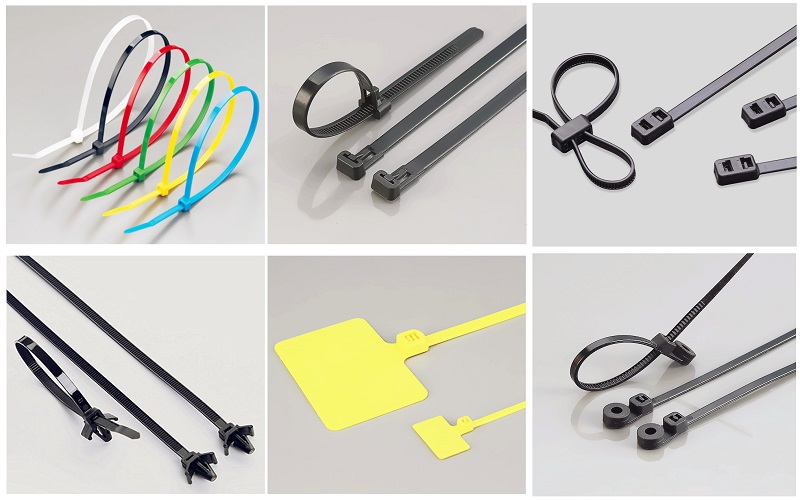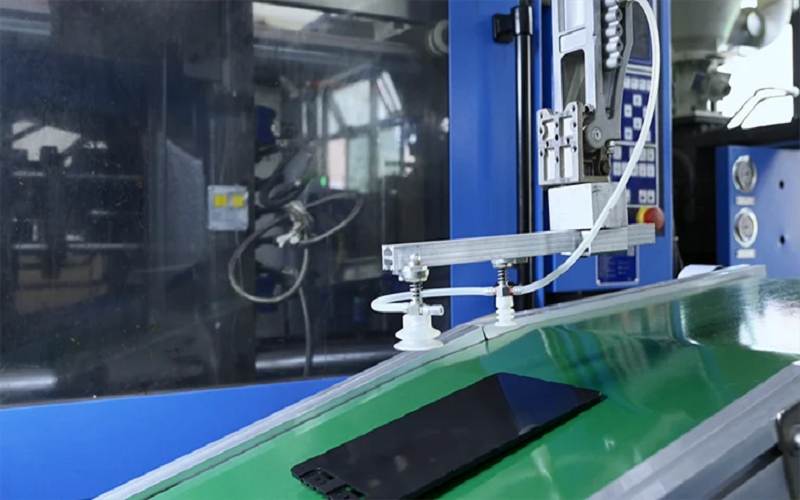Nylon is a type of plastic composed of polyamide resins, and is a general term for polymers whose molecular backbone contains repeating amide groups -[NHCO]-.
As the world’s first synthesized synthetic fiber, the “nylon family” has a vast array of members.
This article primarily introduces seven common types of nylon: nylon 6, nylon 66, nylon 11, nylon 12, nylon 610, nylon 612, and nylon 1010.
In the following sections, we will delve deeper into the performance, applications, and environmental impacts of these nylons.
Methods Of Classifying Nylon
Nylon can be classified based on its main chain structure into aliphatic, semi-aromatic, and fully aromatic types.
Aliphatic nylons are tough due to their linear structure with alternating methylene and amide groups.
Semi-aromatic nylons, with one benzene ring in their structure, have enhanced heat and mechanical resistance and stability.
Fully aromatic nylons, containing benzene rings in both monomers, have superior strength and resistance to heat, chemicals, and radiation but are more difficult to process and more expensive.
Classification of polyamide | |
Classification | Variety |
Aliphatic(PAp) | PA6,PA11,PA12 |
Aliphatic(PAmp) | PA46,PA66,PA610,PA612,PA1010,PA1212 |
Semi-aromatic (PAxy) | MXD6,PA4T,PA6T,PA9T,PA10T |
Aromatic | PPTA,PBA,MPIA |
Compared to conventional types, specialty nylons that incorporate new synthetic monomers possess superior properties.
Even with enhancements such as reinforcement and flame retardancy, standard nylons (like PA6, PA66) have limitations, including high hydrophilicity, low heat resistance, and poor transparency, which restrict their application scope.
Therefore, to mitigate the shortcomings of conventional nylons and introduce new features, a range of specialty nylons with varying properties are synthesized by incorporating new monomers, catering to a broader array of use cases.
These specialty nylons include high-temperature nylon, long-chain nylon, transparent nylon, bio-based nylon, and nylon elastomers, among others.
Classification of speciality nylon | |
Speciality Nylon | Variety |
High temperature nylon | PA4T,PA6T,PA9T,PA10T |
Long carbon chain nylon | PA11,PA12,PA612,PA1212,PA1012,PA1313 |
Transparent nylon | PA TMDT,PA CM12 |
Bio-based nylon | PA11 |
Nylon Elastomers | PEBA |
Common 7 Types Of Nylon:Properties&Uses
Here are seven common types of nylon, along with their respective characteristics and applications:
1.Nylon6(PA6)
Nylon 6 is polymerized from caprolactam as the monomer, with a melting point of 215-225°C and a relative density of 1.14 g/cm³.
It has good mechanical strength and wear resistance, and exhibits excellent electrical insulation and chemical resistance, maintaining stable performance in various environments.
By adding additives such as glass fibers, the shrinkage rate can be reduced to 0.3%, thereby improving its dimensional stability.
Currently, it is widely used in textiles, industry, consumer goods, and packaging among other fields.
2.Nylon66(PA66)
Nylon 66 is produced by condensing hexamethylenediamine and adipic acid, resulting in a semi-transparent or transparent milky white crystalline form.
Compared to Nylon 6, it has better mechanical strength, stiffness, heat resistance, and creep resistance, though its impact strength and mechanical damping properties are reduced.
It’s utilized in engineering plastics, mechanical parts like gears and bearings, and can substitute metals in machine housings and engine parts, as well as in making synthetic fibers.
3.Nylon11(PA11)
Nylon 11 is a flexible long-chain nylon produced by polymerizing omega-aminoundecanoic acid.
Compared to PA12, PA11 has a higher melting point, lower fuel and gas permeability, and superior impact resistance, making it one of the most stable physical and chemical nylons available.
It is mainly used in automotive fuel lines, brake system hoses, fiber optic cable sheathing, packaging films, and daily-use products.
4.Nylon12(PA12)
Nylon 12 is synthesized from laurolactam monomers and is similar to Nylon 11 but has a lower density, melting point, and water absorption.
It is characterized by its high decomposition temperature, low water absorption, and excellent low-temperature performance.
It is primarily used in hoses, automotive parts, cable sheaths, films, and has outstanding performance in 3D printing.
5.Nylon610(PA610)
Nylon 610 is produced by copolymerizing adipic acid, hexamethylenediamine, and caprolactam, sharing many properties with Nylon 66 but with a lower density and water absorption, and excellent low-temperature performance.
PA610 is widely used in precision plastic parts, oil pipes, containers, ropes, conveyor belts, bearings, linings, insulation materials in electrical and electronics, and instrument casings.
6.Nylon612(PA612)
The main component of Nylon 612 is polydodecanedioic hexamethylenediamine, a tough nylon material.
Besides typical polyamide characteristics, it has a narrow width, lower water absorption and density, good dimensional stability, high tensile strength, and impact strength, and transparency.
It is primarily used in the manufacture of high-end toothbrushes and other industrial bristles.
7.Nylon1010(PA1010)
Nylon 1010, developed from castor oil by the Shanghai Celanese Plastic Factory in China, is highly extensible, stretching to 3-4 times its original length.
It features high tensile strength, superb impact and low-temperature performance, and remains flexible down to -60°C.
With excellent wear resistance, toughness, and oil resistance, it is extensively used in aerospace, cable manufacturing, and metal or cable coatings.

Which Type Of Nylon Is Used For Injection Molding?
Although there are many types of nylon, in plastic injection molding, Nylon 6 and Nylon 66 are the two most commonly used materials.
Nylon 6, with its excellent wear resistance and electrical insulation properties, is widely used in automotive interiors and engine components, electronic and electrical components, household items, and other industrial applications such as pumps and valves.
Meanwhile, PA66 is particularly suited for manufacturing high-performance engineering components that require high mechanical strength and heat resistance, high-temperature automotive parts, heavy-load electrical components, and precision machinery components.
Compared to other materials, nylon injection molding products offer lighter weight, better durability, and lower cost, making them the preferred choice in the plastic injection molding companies.
However, due to the strong hygroscopic nature of nylon’s amide groups, thorough drying is necessary before use to ensure the quality of the molding.

How Does Nylon Affect The Environment?
The production and usage of nylon contribute to various environmental detriments.
Initially, nylon production depends on non-renewable petroleum and consumes substantial resources, leading to significant emissions of carbon dioxide and nitrogen oxides, polluting the environment.
Additionally, nylon safety poses potential risks to both the environment and human health.
During use, nylon products can release harmful particles, causing further harm.
Nylon also emits hazardous substances, such as phthalates, adding to its environmental burden.
Moreover, from a plastic recycling standpoint, nylon exhibits a relatively low recycling rate in practical applications.
Different types of nylon, such as Nylon 6 and Nylon 66, may require varied recycling techniques, adding to the complexity of the process.
To counter these environmental challenges, scientists and engineers are developing more sustainable nylon alternatives, like bio-based nylon created through bioengineering using plant oils instead of petroleum, thus reducing reliance on fossil fuels and decreasing environmental pollution.

Summary
In the content above, we have explored the main categories of nylon and the characteristics and applications of seven common types of nylon.
If you are interested in starting a nylon injection molding project, please contact us! FOWMOULD will provide you with a one-stop customized service!
